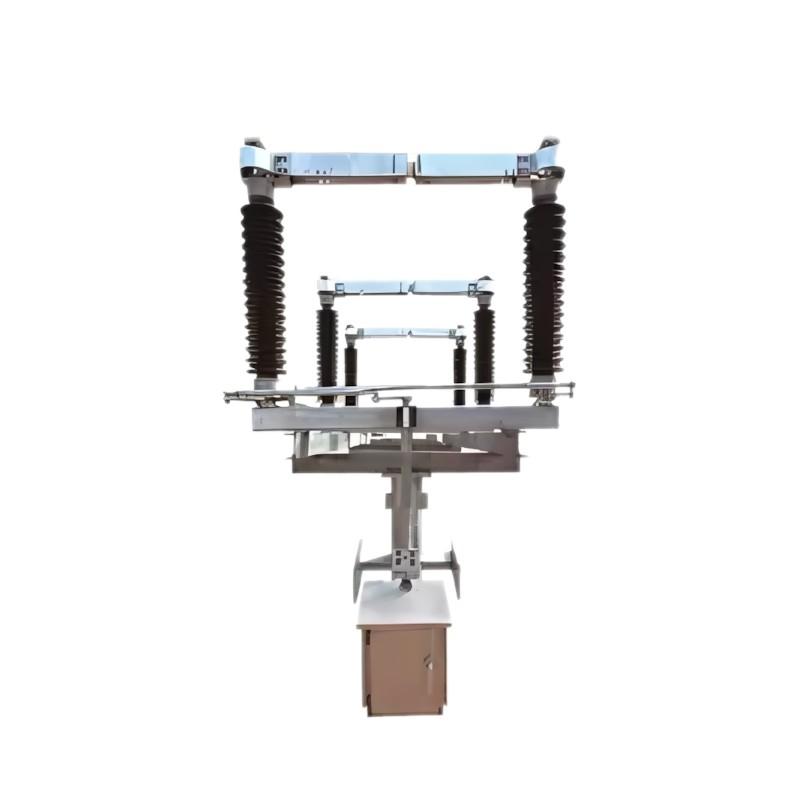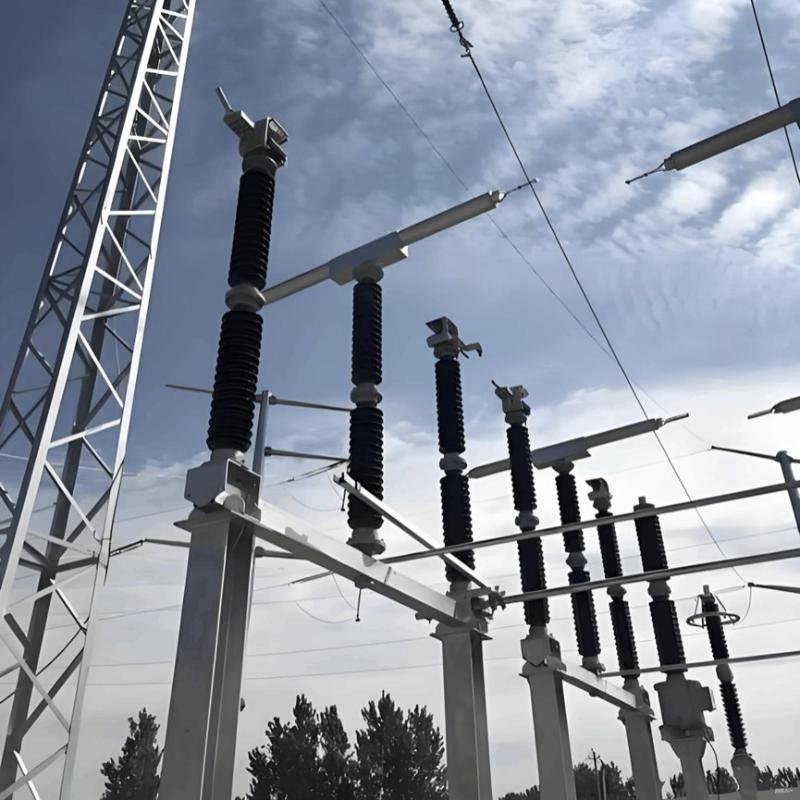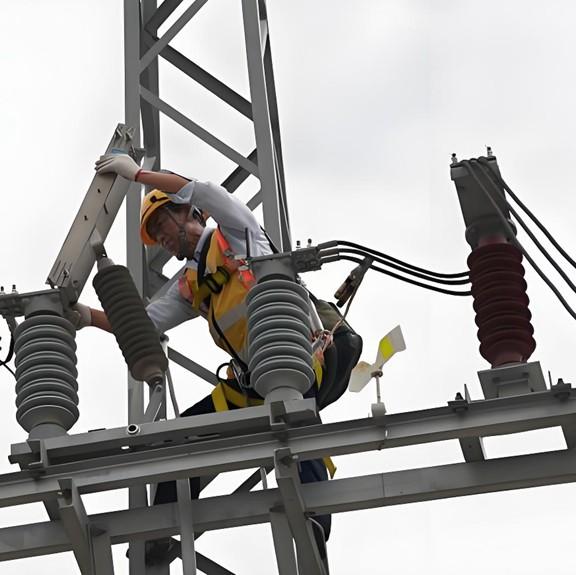Ang Epekto sa Secondary Equipment ug mga Paghimo sa Mitigation Measures sa GIS Disconnector Operations
1.Epekto sa GIS Disconnector Operations sa Secondary Equipment
1.1 Epekto sa Transient Overvoltage
Sa panahon sa pagbukas o pagbutang sa Gas-Insulated Switchgear (GIS) disconnectors, ang paulit-ulit nga pagbag-o ug pagwala sa ark sa pagitan sa mga contact nagresulta sa energy exchange sa pagitan sa system inductance ug capacitance, naggenehera og switching overvoltages nga may magnitudes 2–4 ka beses sa rated phase voltage ug durations nga nagranggo gikan sa tens of microseconds hangtod sa several milliseconds. Sa operasyon sa short busbars—diin ang disconnector contact speed mubo ug walay arc-quenching capability—ang pre-strike ug re-strike phenomena mogenera og Very Fast Transient Overvoltages (VFTOs).
Ang VFTOs magpropagate pinaagi sa internal GIS conductors ug enclosures. Sa impedance discontinuities (e.g., bushings, instrument transformers, cable terminations), ang traveling waves magreflect, refract, ug superimpose, distorting waveforms ug amplifying VFTO peaks. Bisag unsa ka dako ang wavefronts ug nanosecond-scale rise times, ang VFTOs maginduce og transient voltage surges sa secondary equipment inputs, naabot sa damage sa sensitive electronics. Kini makapakyas sa protective relays nga maloperate—triggering unwarranted tripping—ug disrupt high-precision signal processing ug data transmission. Bisan pa, ang VFTO-generated high-frequency electromagnetic interference (EMI) magdegrade sa communication modules, naaumento ang bit error rates o causing data loss, resulta nianang impair substation monitoring ug control functions.

1.2 Potential Rise sa Enclosure
Kaniadtong China nagpadayon sa pagexpand sa iyang ultra-high-voltage (UHV) ug extra-high-voltage (EHV) grids, ang electromagnetic interference gikan sa GIS disconnector operations naging mas severe. Ang coaxial structure sa GIS—gipangkompra sa inner aluminum/copper conductors ug outer aluminum/steel enclosures—exhibits excellent high-frequency transmission. Tungod sa skin effect, ang high-frequency transient currents magflow sa outer surface sa conductor ug inner surface sa enclosure, kasagaran naggiprevent sa field leakage ug maintaining the enclosure at ground potential under normal conditions.
Pero, kung ang VFTO-induced transient currents magencounter sa impedance mismatches (e.g., sa bushings o cable terminations), ang partial reflection ug refraction mosunod. Ang uban nga voltage components magcouple sa pagitan sa enclosure ug earth, nagresulta og instantaneous potential rise sa otherwise grounded enclosure. Kini nagpakita og risks sa personnel safety ug maausab ang insulation sa pagitan sa enclosure ug internal conductors, accelerating material aging ug reducing equipment lifespan. Giya sa wala, kini elevated potential magpropagate pinaagi sa cables ug connected devices sa secondary systems, inducing EMI nga maglead sa false tripping, data errors, o even internal breakdowns—directly threatening power system reliability.
1.3 Electromagnetic Interference (EMI)
Sa GIS substations, ang disconnector/breaker operations ug lightning strikes mogenerate og transient electromagnetic fields nga affect secondary systems pinaagi sa conducted ug radiated coupling.
Conducted interference nagresulta pinaagi sa instrument transformers ug ground potential differences. Ang VFTOs magcouple gikan sa primary sa secondary circuits pinaagi sa stray capacitance ug inductance sa transformers. Sila usab maginject sa grounding grid pinaagi sa grounding electrodes, elevating ang entire ground potential ug creating ground loops nga destabilize secondary equipment.
Radiated interference mosunod kung ang transient EM fields magpropagate sa space, directly coupling into secondary cables ug devices. Ang electric field coupling affects high-impedance nodes, causing signal distortion o false triggering—especially sensitive sa distance, field orientation, ug device geometry. Ang magnetic field coupling induces electromotive forces sa circuit loops per Faraday’s law; ang severity depends sa field strength, rate of change, ug loop area.
1.4 Epekto sa Mechanical Vibration
Ang disconnector operations mogenerate og mechanical vibrations tungod sa contact impact, friction, ug electromagnetic forces sa panahon sa make/break actions. Ang rapid separation sa pagbukas o forceful engagement sa pagbutang mogenerate og shockwaves nga vibrate sa GIS structure. Ang transmission pinaagi sa linkages ug gears molambo ang vibrations sa adjacent secondary equipment.
Kini nga vibrations makapakuyog sa mechanical fasteners, degrade electrical connections, increase measurement errors, o—sa extreme conditions—cause short circuits. Ang long-term exposure magaccelerate ang aging sa both mechanical ug electronic components, shortening equipment life ug compromising reliability.
2.Mitigation Measures para sa Protection sa Secondary Equipment
2.1 Optimized GIS Structural Design
Material Selection: Gamiton ang SF₆ mixtures nga may higher dielectric strength; pilion ang low-loss, high-conductivity materials (e.g., Cu/Al) para sa shielding; optimize busbar length ug capacitance para mapadami ang VFTO amplitude.
Structural Improvements: Smooth conductor ug shield geometries para mapalito ang electric field concentration; improve insulator support design para uniform field distribution; implement controlled disconnector operation speeds ug add snubber circuits para absorb transient energy.
Vibration Control: Install hydraulic buffers o springs sa operating mechanisms; gamiton ang rubber dampers sa pagitan sa GIS ug foundations; enhance contact surface precision para minimize impact forces.
2.2 Enhanced Shielding ug Grounding
Pangipad: Ipakita ang mga sensitibong secondary devices (e.g., relays, communication units) sa mga conductive enclosures (galvanized steel/aluminum) nga may sealed seams. Gamit ang shielded o double-shielded cables nga may proper termination; ipasok ang filtered connectors ug mesh screens sa mga vents. Para sa maong cables (<10 m), gamit ang single-point grounding; para sa mas dugay nga runs, adopta ang multi-point grounding aron mapalito ang induced voltages.
Grounding: Pahimutang ang grounding resistance ≤4 Ω. Sa high-resistivity soils, deploy ang interconnected grounding grids uban vertical rods. Gamit ang single-point grounding alang sa analog circuits ug multi-point grounding alang sa digital/high-frequency systems. Optimisa ang grid layout (e.g., rectangular mesh uban cross-junction electrodes) aron sigurado ang uniform current dispersion ug low potential gradients.
2.3 Pag-filter ug Suppression Technologies
Filters: Install ang power-line filters sa secondary equipment inputs aron mapigilan ang high-frequency noise. Apply ang digital signal filtering algorithms aron mapalambo ang data integrity sa communication channels.
Surge Protection: Deploy ang ZnO arresters near sa secondary equipment aron mapigilan ang VFTOs ug switching surges. Gamit ang surge protective devices (SPDs) sa signal ug communication lines aron mapadala ang transient energy sa ground, sigurado ang stable weak-signal transmission.
2.4 Ginpadak-on nga Secondary Equipment Hardening
Hardware Protection: Reinforce ang mounting brackets uban thicker steel ug added stiffeners. Isolate ang equipment pinaagi sa rubber mounts o dual-stage vibration isolators. Secure ang PCBs uban thicker substrates, edge fixings, ug damping pads. Pot ang critical components (e.g., ICs, relays) sa encapsulants o elastic holders aron mapigilan ang loosening. Iwas sa long, thin traces aron mapabag-o ang fracture risk.
Software Protection: Implement ang checksums ug error-correcting codes (ECC) aron matodok/mausab ang data corruption. Insert ang “NOP” (no-operation) instructions sa firmware aron mapahimulos ang recovery gikan sa EMI-induced program jumps, mapigilan ang deadlocks ug mapalambo ang system resilience.
3.Conclusion
Ang komprehensibo nga pagkamatuod sa paunsa makapadako ang GIS disconnector operations sa secondary equipment nagpakita nga ang comprehensive mitigation strategies mahimong essential alang sa grid reliability. Sa panahon sa design, construction, ug operation sa power systems, ang electromagnetic compatibility (EMC) tali sa GIS ug secondary systems kailangan priorisar. Pinaagi sa pag-integrate sa structural optimization, robust shielding/grounding, advanced filtering, ug hardware/software hardening, ang adverse effects sa disconnector-induced transients, EMI, ug vibration mahimo mopagamot—sigurado ang mas ligtas, mas reliable, ug resilient power delivery.























